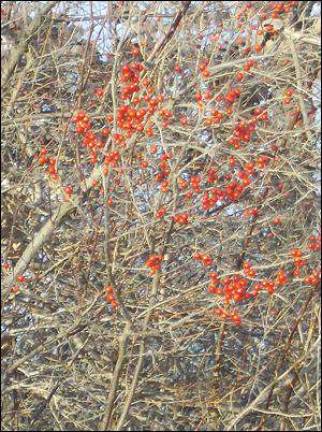The battle of the seasons, the promise of spring

Holly has been a symbol of the season for thousands of years, dating back well into Europe’s pagan days. Europe’s ancient Celts associated holly with the Holly King, who was said to rule the year from summer until the winter solstice, when he’d be defeated in battle by the Oak King. This solstice association with holly continued through the Christian era of Europe, and its yuletide omnipresence continues today. In much of Europe, in fact, tiny live holly bushes are sold at streetside markets during this season, and rare is the home that hasn’t one of these on a sill at this time. We might imagine the comfort the pilgrims took, arriving in this new world the week before Christmas, in seeing our Yuletide counterpart, American holly (ilex opaca), to their “European holly” (ilex aquifolium). Somewhere in each Puritan heart, one imagines some small spark of Christmas hope was felt. While native American holly is rarely seen in our area, an even more interesting native variety, Winterberry holly (ilex verticillata) may be found, as it had been for centuries prior to the arrival of European settlers. Winterberry holly is a wetland species, but don’t put your galoshes on just yet it can be seen along marshy roadsides, and it’s hard to miss, especially in snow. In winter it loses its leaves (somewhat unusual, for a holly), and its large, orange-red berries stand out like some fantasy Christmas card vision. There’s a beautiful Winterberry holly just a few yards south (toward Monroe) of Chester’s highway garage, about 10 feet off Laroe Road. Watch for it after a snowfall. In Warwick, they can be seen along Route 94 out past Penning’s Farm Market. And in Florida, most shores of Glenmere reveal Winterberry against the lake’s frozen background. Winterberry holly can be purchased through nurseries, and it’s a useful shrub for planting in those wet areas of your lawn: it attracts winter birds, deer leave it alone, and it’s a beautiful native reminder each winter of the constant “battle” between the seasons, and the promise of the eventual return of spring.